The process of moving house is a stressful time for all concerned, including pets. Many household pets, especially cats and dogs, are very territorial and become attached to their surroundings. A new home will have an unfamiliar layout and smells which can unsettle your pets. There are a number of simple steps that can be taken to reduce the stress of moving for your cat or dog.
Before you move house:
 |
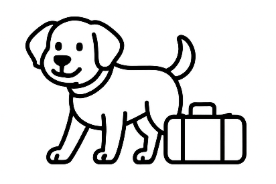 |
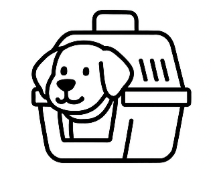 |
1. Change your address on tags, chips, insurance etc. Make sure you have new tags made for your cat or dog with your new contact details and address on them which should be put on your pet on the day of the move. If your pet manages to escape during the move they can be returned easily. Also ensure that microchips and the pet insurance policies have been updated.
2. Arrange for your pet to stay elsewhere. Some pets, especially dogs, can become stressed with lots of unfamiliar people in the house. It would be helpful if you can arrange for your pets to stay with a familiar friend/family member or even in a cattery/kennel on the day of the move and maybe even for a couple of days after the move. As the doors of the house are likely to be open all day during the move, this also limits the chances of the pets escaping!
3. Avoid packing toys and bedding until the last minute. It is helpful to confine your pet to one or two quiet rooms in the house while the packing is being done. Place their favourite toys, bedding etc in the rooms so they are familiar and comfortable in the rooms. These items should then be packed at the last minute.
4. Sort out comfortable travel arrangements. This is especially important if you are moving a considerable distance away. If your pet does not like travelling in the car, you should speak to the vet about ways to make the journey less stressful. Always ensure that the car is well ventilated and you take comfort regular breaks.
On the day of the move:
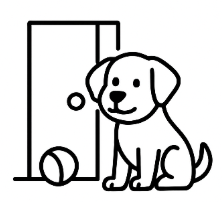 |
 |
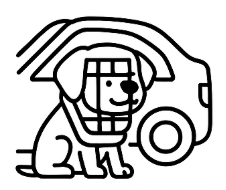 |
5. Ensure your pet is in the house! To save hassle and extra stress, make sure that your pet is safely confined to a quiet room with their toys. This stops any risk that the pet can escape and prevents any potential delays while searching them.
6. Put their new tags on. Just before you leave the old house, put the new tags with your contact details and the new address onto their collars.
7. Make them comfortable in the car. Securely place your pet in the car in their carry case, travel crate or behind the dog guard. If using a carry case or travel crate, make sure they are strapped in to prevent it moving around the car.
After the move:
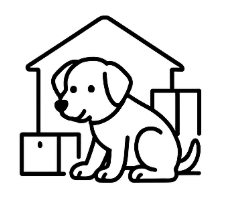 |
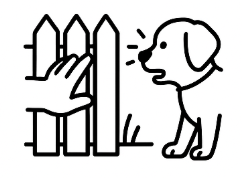 |
 |
8. Allow time to settle in. Pets can take time to settle into a new environment or territory. Cats especially should be kept indoors for up to two weeks to fully adjust.
9. Use familiar smells to help settling in. It helps the settling in process if there are familiar smells in the house. One way to achieve this is to not wash any of your pets bedding for a couple of weeks after the move. It is also worthwhile rubbing your cats face with a soft cloth and then rubbing this cloth on the corner of doors and units so that there is a familiar smell in the house.
10. Check the garden fence. Before you let your dog in the garden you should check the perimeter fence to ensure that there are no holes that they can escape through. If they can get out, take them out on a lead until it is secure.
11. Chase away ‘rival’ cats. Before you let your cat out in garden, make sure you have chased away any other cats that have come into your new garden. This will help your cat mark their territory when they get outside.
Check out our other Moving Tips & Guides >>>
Next Day Delivery Learn More
Our Quality Guarantee Learn More
Money Back Guarantee Learn More